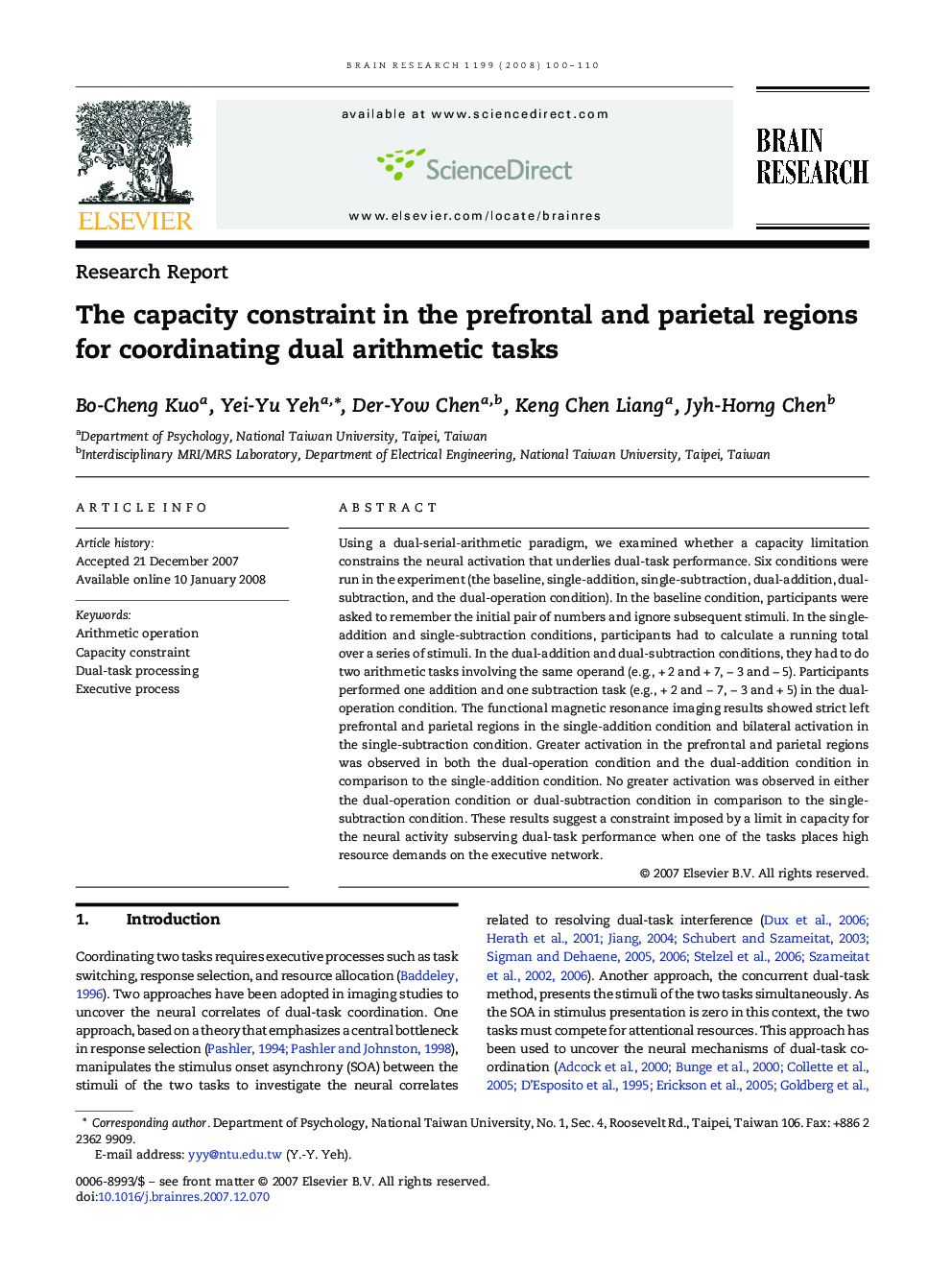| Article ID | Journal | Published Year | Pages | File Type |
|---|---|---|---|---|
| 4329985 | Brain Research | 2008 | 11 Pages |
Using a dual-serial-arithmetic paradigm, we examined whether a capacity limitation constrains the neural activation that underlies dual-task performance. Six conditions were run in the experiment (the baseline, single-addition, single-subtraction, dual-addition, dual-subtraction, and the dual-operation condition). In the baseline condition, participants were asked to remember the initial pair of numbers and ignore subsequent stimuli. In the single-addition and single-subtraction conditions, participants had to calculate a running total over a series of stimuli. In the dual-addition and dual-subtraction conditions, they had to do two arithmetic tasks involving the same operand (e.g., + 2 and + 7, − 3 and − 5). Participants performed one addition and one subtraction task (e.g., + 2 and − 7, − 3 and + 5) in the dual-operation condition. The functional magnetic resonance imaging results showed strict left prefrontal and parietal regions in the single-addition condition and bilateral activation in the single-subtraction condition. Greater activation in the prefrontal and parietal regions was observed in both the dual-operation condition and the dual-addition condition in comparison to the single-addition condition. No greater activation was observed in either the dual-operation condition or dual-subtraction condition in comparison to the single-subtraction condition. These results suggest a constraint imposed by a limit in capacity for the neural activity subserving dual-task performance when one of the tasks places high resource demands on the executive network.
